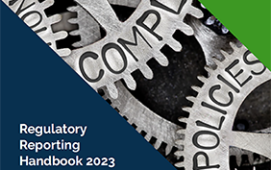Thomson Reuters has set out the details of its Permanent Identifier (PermID), a machine readable identifier covering a wide variety of data items including financial institutions, instruments, events and people, and part of the company’s open platform strategy.
PermID is the internal standard devised after the merger of Thomson and Reuters to master the company’s disparate databases. It was first made publically available in April 2015 alongside Thomson Reuters’ Open Calais intelligent tagging solution, which tags the identifier to unstructured data. It is now freely available with selected reference data under an open creative commons licence on the PermID.org website. The website includes a user interface and an open application programming interface (API) for access to PermID data, as well as the capability to match entity lists to PermIDs and use the Open Calais tagging solution.
Thomson Reuters intends to add a PermID to every data item it tracks. To date, the website provides PermIDs covering about 3.5 million organisations, 240,000 equity instruments and 1.2 million equity quotes. The company is looking at how to add PermIDs to people and include them on the website, which is difficult for legal reasons, and will add fixed income instruments and quotes in the near future.
Tim Baker, global head of content strategy and innovation, financial and risk, Thomson Reuters, explains: “We connected our data internally with PermIDs, but kept legacy identifiers in our outbound feeds. Customers were cross-referencing the legacy identifiers and finding this difficult, so we have provided one type of identifier for all our products and include it in all our outbound feeds. This will help firms connect and aggregate data for risk and reporting, and help large banks struggling to meet BCBS 239 requirements to establish a data model and governance tie all their data together. Linking data together using PermID will also lower the cost of data ownership.”
Beyond regulation and cost, Thomson Reuters suggests PermID will make the acquisition and integration of data easier, help the management of big data, which requires an understanding of relationships between customers, products, research and events, and remove the limitations of legacy systems that are required to fit different concepts into the same fields. The company also notes that PermID connects all Thomson Reuters’ content offerings, simplifying business processes and improving data insight and risk management, although it can be used by companies that do not use the company’s products.
Baker says PermID is part of Thomson Reuters’ open platform strategy, which also includes Elektron API, a set of open source APIs released earlier this year and designed to simplify access to the company’s data feeds and services for application developers. PermID does not replace existing identifiers or the Reuters Instrument Code (RIC), although every RIC does have a PermID and it may become a field entry rather than a primary identifier over time.
He explains: “Customers can cross-reference across all identifiers such as ISINs, BBG IDs, Legal Entity Identifiers and Duns numbers, none of which are very comprehensive.” He suggests BBG IDs, Bloomberg’s open source identifiers that were renamed as Financial Instrument Global Identifiers (FIGIs) last year, are not as comprehensive in their coverage as PermIDs and perhaps not as open or extensive in terms of entity resolution data.
To encourage the take-up of PermID, Thomson Reuters is working with Tamr, a provider of cross-reference and data resolution services, and is close to reaching third-party agreements with product vendors and exchanges that will add PermIDs to their products and services. An early adopter of the identifier is Crowdnetic, a provider of crowdfunding data that will use PermIDs as its primary symbology to record and track crowdfunding transactions. The data will be available on Thomson Reuters Eikon desktop and is expected to increase transparency in the crowdfunding market.
In answer to the question of whether PermID adds one more identifier to the many already used in capital markets, Baker concludes: “We are not positioning PermID as another identifier, but looking to reduce and consolidate the number of identifiers in the market.”
Subscribe to our newsletter




